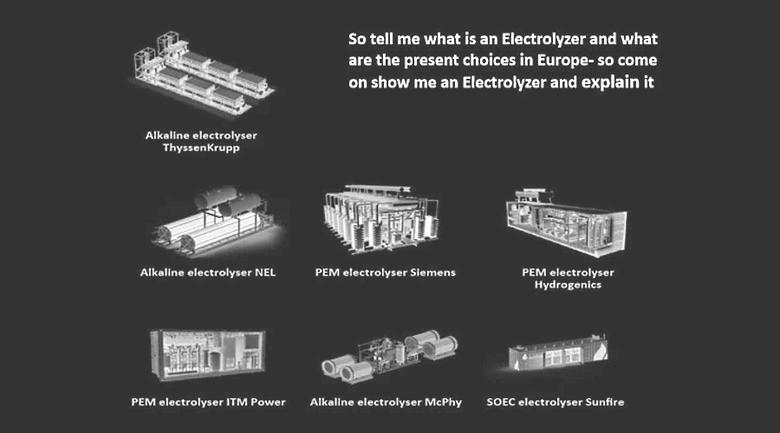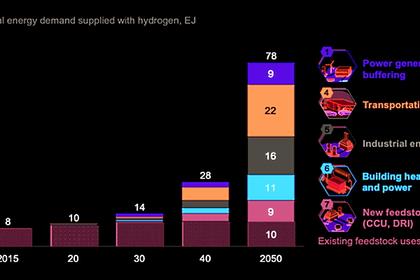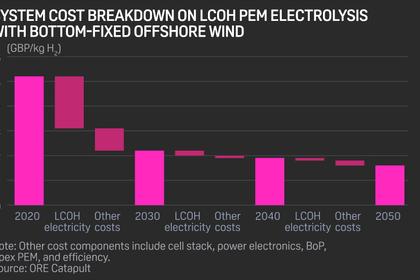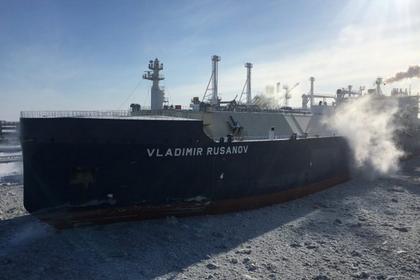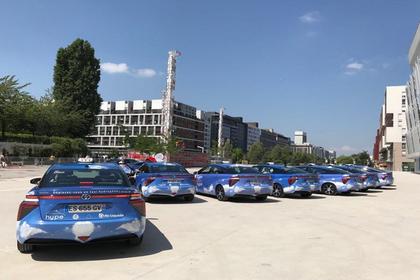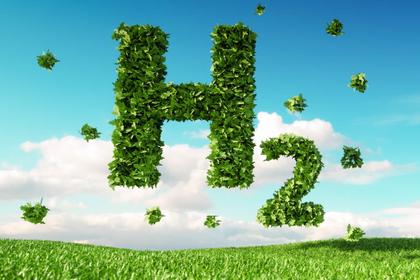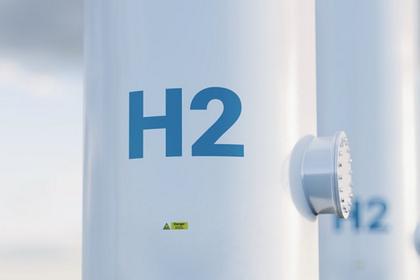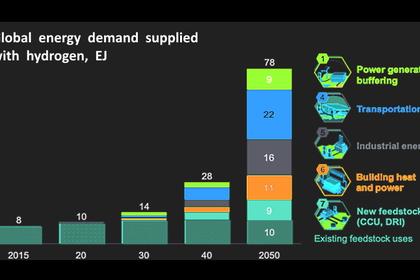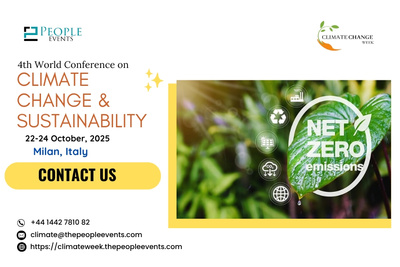I have referred to several technical documents offered by the Hydrogen Council, the Hydrogen Europe, and specifically, a white paper by Dr. Philipp Lettenmeir of Siemens called “Efficiency- Electrolysis,” written in January 2019.
So, getting into the different choices of Electrolyzer first, drawing from the different papers.
Currently, there are two commercially relevant electrolysis technologies on the market for products in the MW range. These are the PEM and alkaline electrolysis. Both of their underlying technologies differ primarily in the ionic charge carrier that electrically closes the electrochemical process, as well as in the actual electrolytes.
The efficiency of the electrolysis systems is critical both technically and economically for electrochemical hydrogen generation using renewable energy.
Hydrogen generation costs are primarily dominated by the relatively high-power costs in addition to operating hours and amortization of the plant. From a technical standpoint, these costs can only be reduced by increasing overall efficiency.
The Different Electrolyzers currently available
Electrolyzers consist of individual cells and central system units. By combining electrolytic cells and stacks, hydrogen production is presently adapted to individual needs. Electrolyzers are differentiated by the electrolyte materials and the temperature at which they are operated.
Water electrolyzers needed for the Green Hydrogen solutions are classified into three main categories: alkaline, polymer-electrolyte membrane (PEM) and solid oxide electrolyzers (SOE).
Polymer electrolyte membrane (PEM) or proton exchange membrane technology, as the name indicates, includes a solid electrolyte that electronically isolates the anode from the cathode but electrically closes the electric circuit through its selective conductivity for cations. This nearly gas-tight solid electrolyte offers several specific advantages. On the one hand, it serves as a physical divider between the anode (oxygen side) and the cathode (hydrogen side) and prevents the mixing of the generated gases. This divider enables operations with differential pressure. The concern for the PEM electrolyzers it presently needs significant amounts of platinum for their catalyst layers.

The alkaline electrolyzer has a porous separator to physically separate the hydrogen and oxygen gases while still enabling the transport of the liquid electrolyte. This porous separator increases the requirements for alkaline electrolyzers in dynamic operation. Differential pressures that can result in hazardous mixing of oxygen and hydrogen need to be absolutely prevented in the alkaline electrolyzer due to its porous separator.
The question of comparing the efficiency of both technologies is therefore not easy to answer.
The fact is that the selection of the operating point and the associated voltage is decisive for efficiency. The generally low overall resistances in PEM technology result in a broader range of operating modes.
Solid oxide electrolyzers hold the potential of improved energy efficiency but are still in the demonstration and development phase. They work on high temperatures and mainly require ceramics and a few rare materials for their catalyst layers. The need for high-temperature might limit their long term viability as they require renewable sources of concentrated solar power and high-temperature geothermal power. Where it might become a game-changer is its conversion efficiencies of possibly producing synthetic gas or liquid fuels directly from steam and Co2, potentially attractive to aviation, etc.
There is a fourth Electrolyzer called the anion exchange membrane (AEM) electrolysis (also known as alkaline PEM). I need to find out more about this one.
To sum up, the efficiency of electrolysis is mostly determined by the amount of electricity used to produce an amount of hydrogen. Depending on the method used, the efficiency of the water electrolyzer and is currently in the region of 60 to 80 % (based on the calorific value).
While electrolyzers are already operating in many locations, research continues to improve them further to be more reliable, robust, and efficient.
Research priorities concerning electrolyzers are currently including the following; increasing the efficiency of the electrolyzer system as a whole, along with its operating life, looking at improving power density and stack size, reducing costs (primarily material costs), introducing pressurized systems to avoid the need for subsequent compression of the H2 produced, and not least, developing flexible systems adapted to an intermittent and fluctuating power supply.
All have slightly different operating principles.
The most established and well-matured technique is alkaline electrolysis, whose main advantages are low costs (not using noble electrodes) and long-term stability.
On the other hand, PEMs and SOEs offer a more compact design and make operation at differential pressures feasible and favorable. Due to the solid form of the electrolyte, the systems are more dynamic with a faster response rate upon application of variable power load. It seems that PEM electrolyzers are the most suitable to deal with high current densities, variable partial pressure load, overload, and on-off conditions.
Technology needs radically improving for all Electrolyzers.
To achieve this improvement in Electrolyzers, we will need some remarkable technological enhancements and advancement. The list is long but includes; achieving higher efficiencies, less degradation, higher availability of the number of units, larger cell sizes, higher operating pressures, less reduced critical materials together with this need for reduced material size.
Getting to this ramping up needs the plants will require a significant plant capacity ramping up. Plants need to ramp up their volume produced, and they will be a need for more automation production of the Electrolyzer cell components, the cells, and stacks. A radical redesign of the plant assembly to build GW scale electrolyzer plants and then the final component assembly and engineering finishing work will be radically different from today’s plants.
Researchers and Engineers will be exploring and exploiting new design and innovation.
The issues on the researchers and engineers’ plate in the next few years are many;
They include looking at all levels of efficiency, determine if substitute critical raw materials can be substituted or reduced due to cost and rarity concerns.
The research and technology solutions have system boundaries to work within. This useful visual gives you some understanding, courtesy of Siemens.
Technicians need to look at solutions to reduce the degradation of the polymer membrane, so it is reliable over an average accepted industrial lifetime of 10 to 20 years in varying conditions.
They need to look to reduce the electricity consumption, improve the system hydrogen finished yield, concern themselves with varying contaminants that can affect performance and efficiencies, and find more robust ways to control the temperature of the electrochemical reaction at differing loads and conditions.
Then there are challenges at the installation site to resolve.
At the installed location of any Electrolyzer, the cost of the compressors, gas cleaning, demineralized water, the transformers, the cost of electricity and water, and the installation costs all need addressing and adaptive solutions depending on the operating conditions found.
The real dominant part of establishing Electrolyzers will be the electricity costs, suggested as 60-80% of the finished hydrogen cost. It is renewable energy, coupled with Electrolyzers, makes them viable. The operating conditions and variances the Electrolyzers work within will determine its performance and the demand loads placed on it.
Mastering the technology variables is key to the speed of progression of the Electrolyzer.
So as we all look to Electrolyzers as the solution towards offering a power source of Hydrogen, it is the technology developments that will need to be mastered.
The need to build out capacity volumes to bring down the unit price, we need to see the GW scale to make them industrially attractive, a low renewable integrated electricity- hydrogen partnership, and integrated project development.
The need for construction and installation approaches to make electrolyzers competitive. All variables will need to come together and be resolved.
From my perspective, this indicates a long hard road to travel between now and 2030 to get the Electrolyzer the Real alternative to other power generation options.
Moving to Industrial Ready is the current step to achieve
Today, the Electrolyzer is not Industrial Ready in it is asset readiness, system design, and value chain development. All three aspects will need to be all worked upon to offer solutions that will give underlying confidence in accelerating the Industrial shift to green Hydrogen through the deployment of Electrolyzers fit for each industry, transport, and buildings.
The problem today is the Electrolyzer has only recently moved from a KW to an MW in design. Today the 1 to 10 MW PEM Electrolyzer is a market norm, and 10MW scale systems built-in stack or modular design with developments of 100 MW single scale solutions about three to four years away. To get to a GW scale will possibly be hit by 2030 (Sources Hydrogen Europe Roadmap).
There is an excellent time to provide the research and development needs to this in this period 2020 to 2025 and then into a further “wave” of technology advancements by 2030. The belief is that technology principles, technology understanding, and validations are determined to build a road map of Electrolyzer advancement in the next ten years. It becomes one where the shift is into large scale Industrial solutions needs to make multiple advances across the Electrolyzer board.
In Summary
There is a lot of hard work to ramp up Electrolyzers to make them commercially viable (and subsidy-free). The need is to make them energy-efficient in their use of water and electricity and the conversion process as possible. The ability to generate large volumes of Hydrogen needed in any primary energy change will be demanding, challenging, but rewarding. The Electrolyzer delivering Hydrogen is necessary if we want to decarbonize the current energy system.
***Thanks to the various reference points provided by the Hydrogen Council, as well as Hydrogen Europe, and specifically, a white paper by Dr. Philipp Lettenmeir of Siemens called “Efficiency- Electrolysis,” written in January 2019. Several other articles were also referred too for my research and understanding.
*** A “triggering” post “From MW to GW’s of Renewable Hydrogen using Electrolyzers” can be found on my other posting site, http://www.paul4innovation.com, focused more on innovation development.
-----
This thought leadership article was originally shared with Energy Central's Generation Professionals Group. The communities are a place where professionals in the power industry can share, learn and connect in a collaborative environment. Join the Generation Professionals Community today and learn from others who work in the industry.

